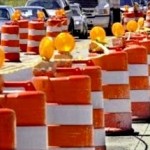 By: Bill Zeeble, KERA NEWS
By: Bill Zeeble, KERA NEWS
With ice in the rear view mirror and snow possibly on the way, North Texas road crews are gearing up for another long night. KERA’s Bill Zeeble looks at the big three techniques used to make roads passable: chemicals, “brine” and the old standby, sand.
The newest kid on the North Texas block of icy roads is brine – salt water, now used by The North Texas Tollway Authority.
Michael Rey: “I have long accused the crews of coming up with this new technique simply to perfect their thanksgiving recipes. They object but not heartily.”
Michael Rey, with the NTTA, says this brine’s a precise mix of 23% salt from Grand Saline, Texas, and water.
Michael Rey:“It’s old school. It’s new to us, but anyone listening in the northeast would laugh at us, because it’s long been used all over the country. But around here we thought we didn’t’ have need for it.”
The NTTA has rethought that. The Brine Master is Jason Skidmore, maintenance supervisor, who learned the technique last year from the Texas Department of Transportation.
Jason Skidmore: “This is our 6,000 gallon storage tanks that we actually make brine, keep them full. That way when our trucks roll in here all they got to do is fill it up and just continuously make more and keep them full.”
Crews pumped brine into tank trucks ahead of the predicted snowfall. But the brine won’t be sprayed unless the snow sticks, packs and turns to ice. Before that, plows clear the roads, then trucks with a mechanical spreader lay down sand, and a mix with magnesium chloride to melt the ice and give cars traction.
Twenty miles south of NTTA’s operation, Dallas crews load sand and salt into trucks to throw down on city streets when snow falls. Last night, Supervisor Anselmo Lopez was ready, but says things could be worse.
Anselmo Lopez: “it’ll be snowing but it won’t be cold enough to freeze. AND WHEN DO THOSE SHIFTS START? They coming in at midnight. 12 hours. 12 to 12”
That means crews will try to get sleep whenever they can. Eight-year driver Thomas Bush finished his shift at 5:30 Tuesday evening, knowing he would be back at midnight.
Thomas Bush: “It’s pretty hard on the drivers because we’re non-stop. We got to keep rolling, we got to make it safe.”
Bush said he’d be fine. But what’s unsafe are drivers who don’t know how to handle ice and snow, even if they think they just learned how over the past few days.
Thomas Bush: “When they say stay home, stay home.”
Bill Zeeble, KERA NEWS




